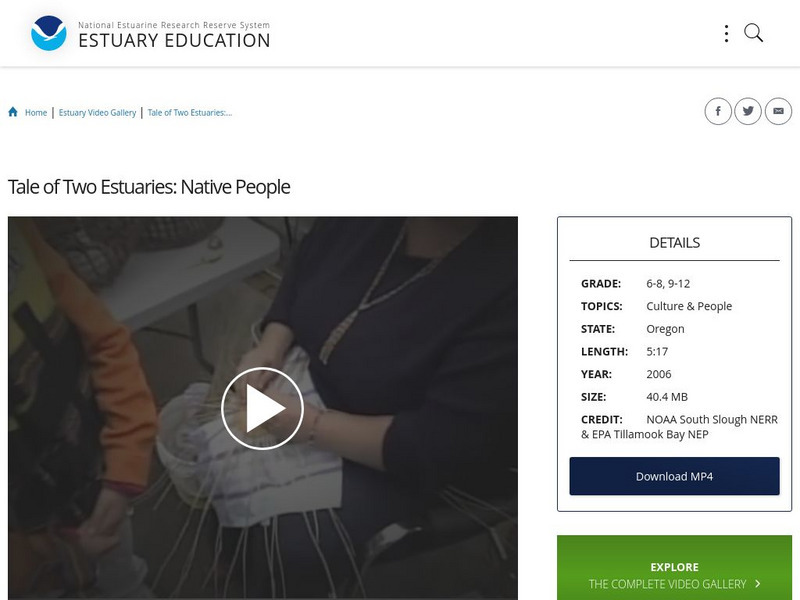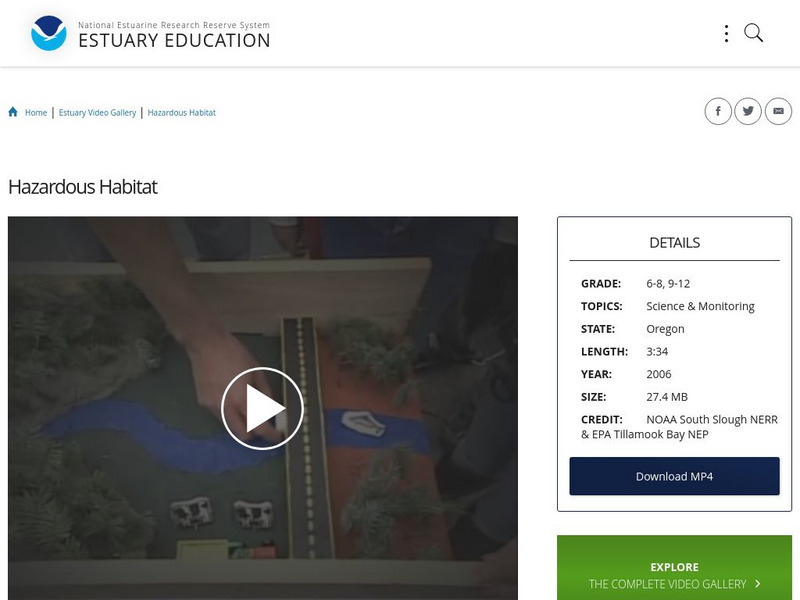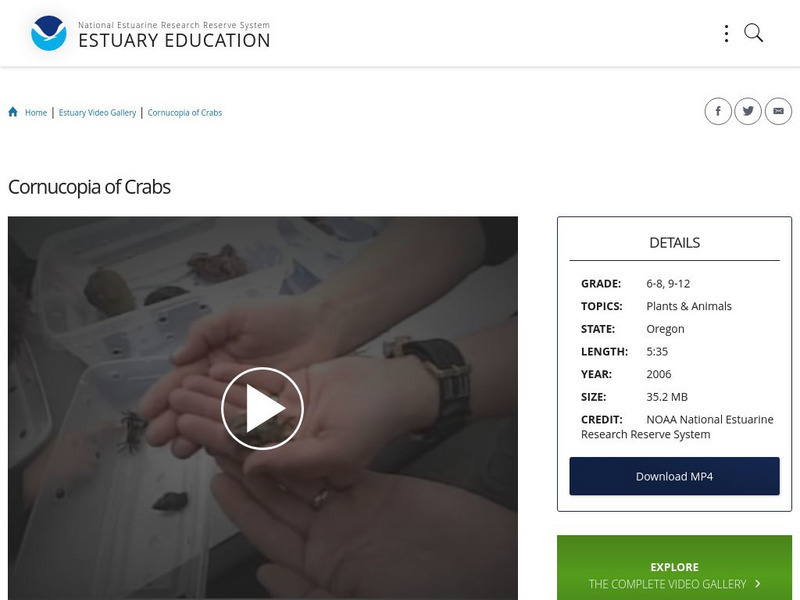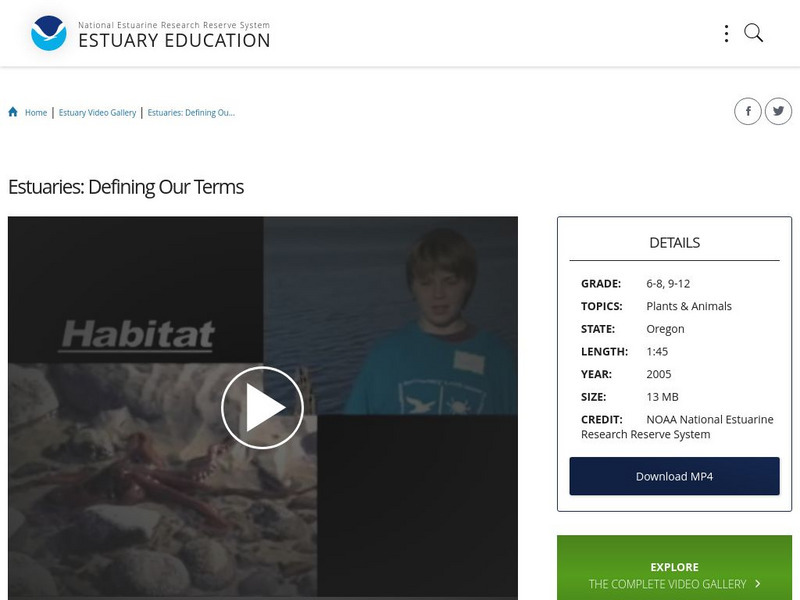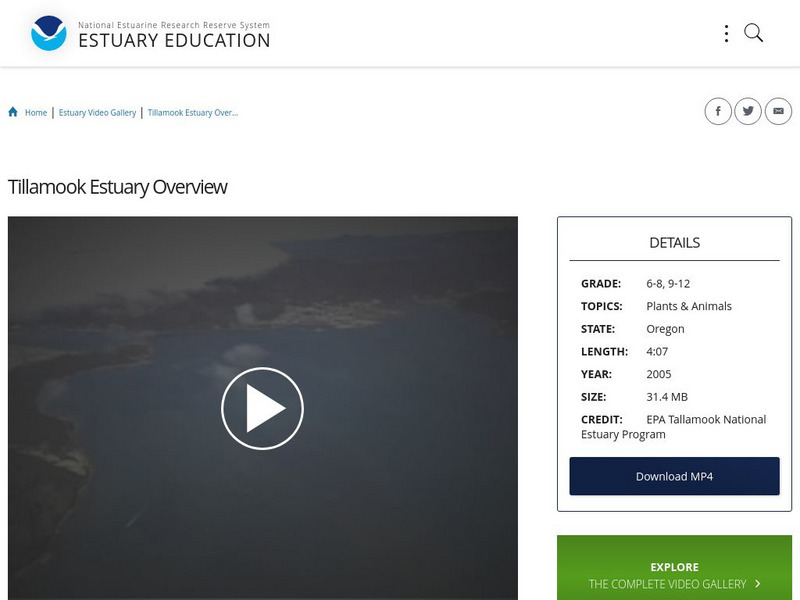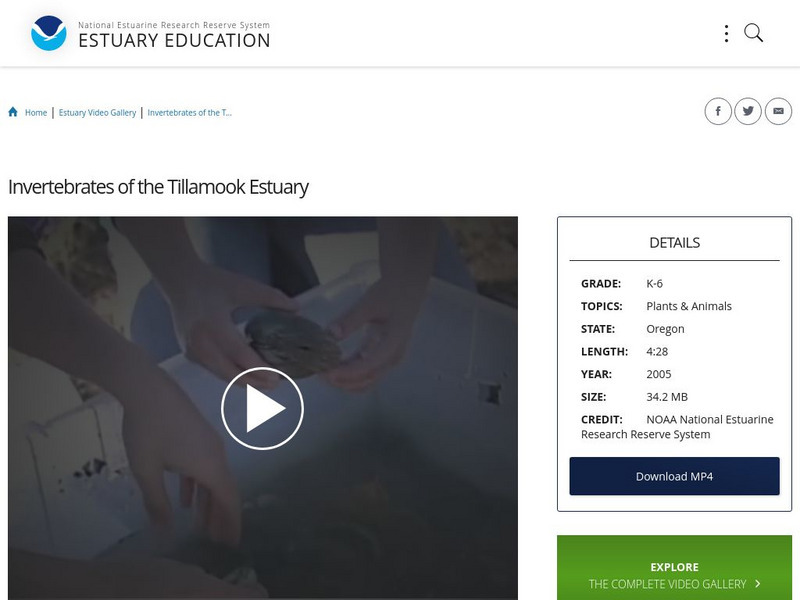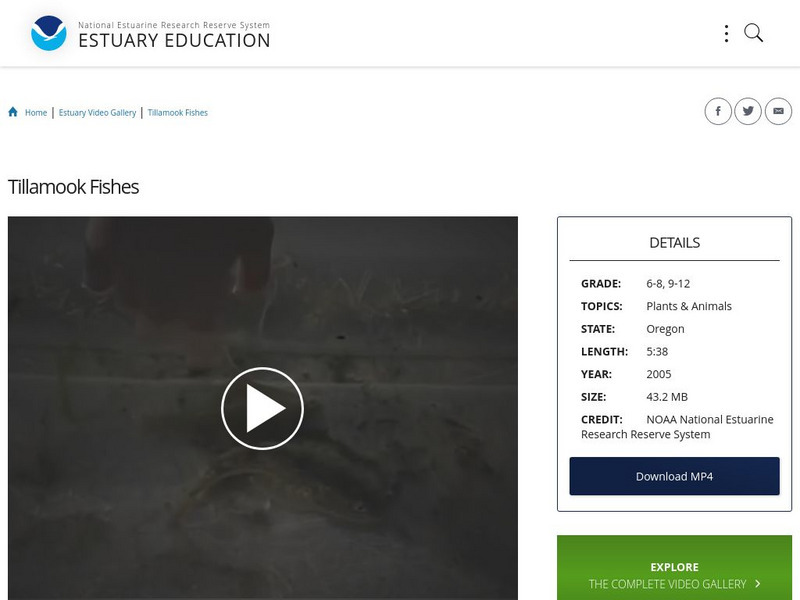Hi, what do you want to do?
NOAA
Noaa: Estuary Education: Urban Estuaries: Living in a Toxic Soup
Urban areas often expand around estuaries. Industrial development often leaves a legacy of pollution in these areas. This video looks at what kind of long-term pollution is found in the Duwamish estuary in Seattle, and how estuary life...
NOAA
Noaa: Estuary Education: Urban Estuaries: Restoration
Students and citizen groups seek to restore and reclaim damaged, changed, or polluted estuaries. [6:52]
NOAA
Noaa: Estuary Education: Urban Estuaries: Counting Critters
Students use a seine net to count marine life in the NY-NJ Estuary. Scientists explain why some animals thrive and others decline, why some fish can be eaten and some cannot. [4:50]
NOAA
Noaa: Estuary Education: Combined Sewer Overflow
A quick overview of how a combined sewer overflow system works, and why heavy rains can be bad for estuaries. [1:42]
NOAA
Noaa: Estuary Education: Building a Salt Marsh
Find out how a salt marsh can be built or rebuilt. This video explains how plants are chosen to restore a salt marsh near New York City. [3:52]
NOAA
Noaa: Estuary Education: Hurricane Hazards
EstuaryLIVE meteorologists explain how a hurricane forms, how it moves, and how to measure potential damage from these dangerous storms. [10:03]
NOAA
Noaa: Estuary Education: Lessons of Lightning
EstuaryLIVE meteorologists explain how lightning forms, and how to avoid danger when thunderstorms erupt. [9:39]
NOAA
Noaa: Estuary Education: Tornado Touchdown
EstuaryLIVE meteorologists explain how a tornado forms, how it moves, and how to measure potential damage from these dangerous storms. [10:16]
NOAA
Noaa: Estuary Education: Tale of Two Estuaries
A detailed look at the life inside two very different estuaries in Oregon: the South Slough and Tillamook estuaries. [8:04]
NOAA
Noaa: Estuary Education: Tale of Two Estuaries: Native People
Estuaries have been home to native people for centuries. Meet members of Oregon's Coquille Tribe who used the estuary's riches to flourish for hundreds of years. [5:14]
NOAA
Noaa: Estuary Education: Salmon Habitat
Through advanced tagging technology, learn how estuaries are important habitats for salmon during parts of their life cycle. [5:33]
NOAA
Noaa: Estuary Education: Hazardous Habitat
Estuaries are important habitats for salmon, but development, deforestation, and human interaction have caused damage to these ecosystems. Learn how to mitigate this damage and restore the estuary. [3:32]
NOAA
Noaa: Estuary Education: Catching Salmon
Salmon leave the estuary and feed in the open ocean. Catching these fish is an important industry in the Pacific Northwest. Learn about tools and techniques for catching salmon. [4:39]
NOAA
Noaa: Estuary Education: Counting Crabs
Students learn how to identify, measure, and tell the gender of several crab species to learn about these marine animals. [4:01]
NOAA
Noaa: Estuary Education: Cornucopia of Crabs
Learn about the wide variety of crabs found in the Oregon waters, including the estuaries and other marine ecosystems. [4:33]
NOAA
Noaa: Estuary Education: Eelgrass Excitement
Find out about species, location, habitat, and other ecological factors of vital estuary eelgrass. [9:08]
NOAA
Noaa: Estuary Education: Getting Involved
Learn how to get involved to protect these important but fragile resources in the estuary ecosystem. [4:59]
NOAA
Noaa: Estuary Education: Estuaries: Defining Our Terms
Students quickly run down the major aspects of what makes an estuary, watershed, habitat, and food web. [1:45]
NOAA
Noaa: Estuary Education: Tillamook Estuary Overview
A video overview of the amazing Tillamook Estuary in Oregon. Exciting photography highlights this 3-minute look this national treasure. [4:03]
NOAA
Noaa: Estuary Education: Plankton Parade
Students learn about the importance of zooplankton and phytoplankton, and why different plankton species are the basis of the estuary food web. [3:25]
NOAA
Noaa: Estuary Education: Invertebrates of the Tillamook Estuary
Students learn about Tillamook Estuary invertebrates and their importance in the food web. [4:25]
NOAA
Noaa: Estuary Education: Tillamook Eelgrass
Eelgrass is one of the most important plant species in the estuary. Tillamook estuary has both native and introduced species of eelgrass. Students learn what this means for the fragile estuarine environment. [3:30]
NOAA
Noaa: Estuary Education: All About Oysters
Learn about oysters, including how they eat, where they live, the life cycle of an oyster, and instructions on opening them and eating them. [5:16]
NOAA
Noaa: Estuary Education: Tillamook Fishes
Student seine the Tillamook estuary and bring back a variety of native species to study. [5:35]














